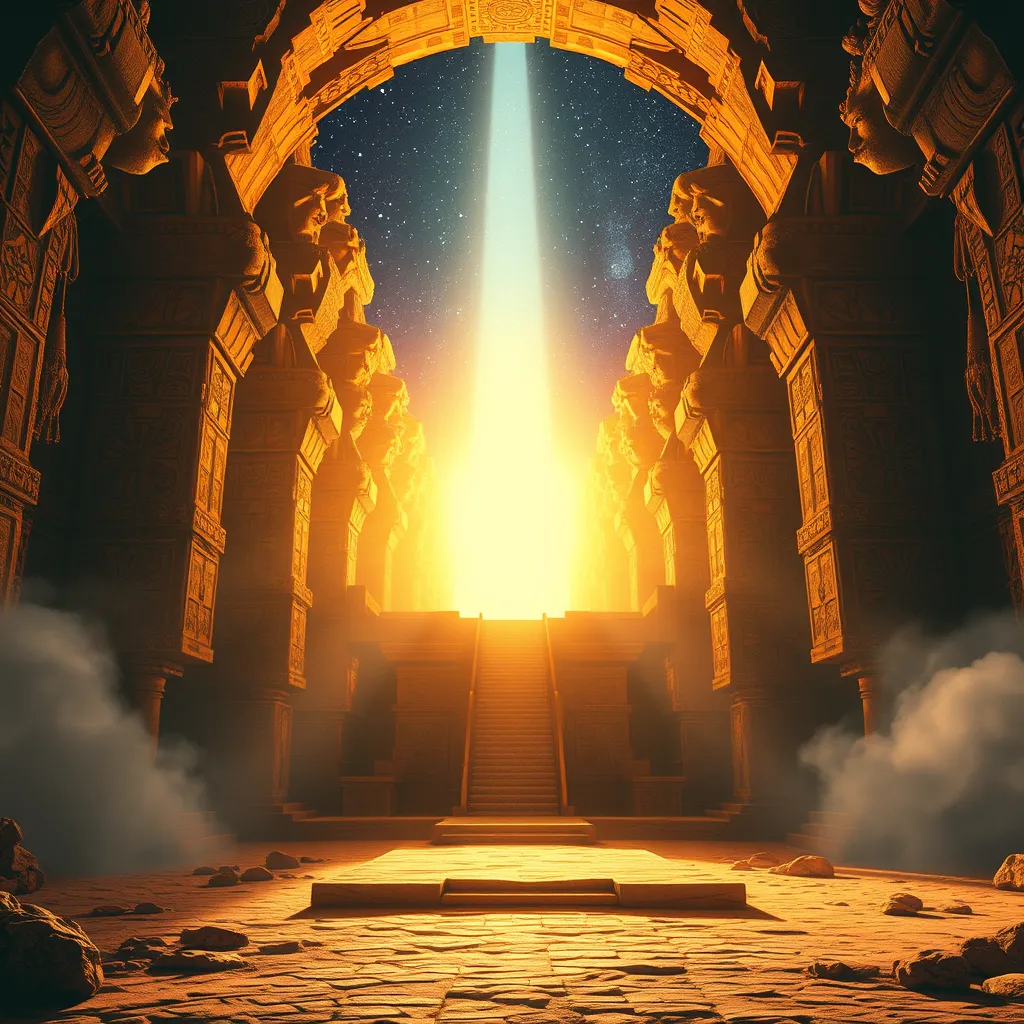The Duat: A Realm of Eternal Light and Shadows
I. Introduction
The Duat, in ancient Egyptian mythology, represents a complex and multifaceted realm that serves as both a place of transition and a reflection of the soul’s journey after death. Often depicted as a dark, shadowy landscape, the Duat is crucial in understanding the beliefs surrounding the afterlife in ancient Egyptian culture. This article aims to explore the concept, structure, deities, and modern interpretations of the Duat, highlighting its significance in both ancient and contemporary contexts.
II. The Concept of the Duat
The Duat is defined as the underworld or the realm of the dead in ancient Egyptian belief systems. It is characterized by its duality, embodying both light and darkness, reflecting the eternal struggle between life and death.
In ancient Egyptian cosmology, the Duat serves as an essential part of the journey of the soul following physical death. It is believed that every individual must navigate the Duat to reach the afterlife, making it a critical aspect of their spiritual existence. The Duat is not simply a place; it is a journey through various landscapes, trials, and encounters with deities.
III. The Structure of the Duat
The Duat comprises multiple layers and realms, each with distinct characteristics and challenges. The structure is often described as a labyrinthine landscape filled with obstacles and spiritual significance.
- Layers and Realms: The Duat consists of several levels, which the deceased must traverse. Each level may represent different states of existence or trials that the soul must overcome.
- Key Locations: Some significant locations within the Duat include:
- The Hall of Judgment: The most renowned location, where the deceased’s heart is weighed against the feather of Ma’at, symbolizing truth and justice.
- The Lake of Fire: A place of purification and potential punishment for the unworthy souls.
- The Field of Reeds: A paradise for the righteous, representing eternal bliss and fulfillment.
The symbolism of light and shadows in the Duat is profound. Light often represents knowledge, truth, and the divine, while shadows signify ignorance, chaos, and fear. This duality plays a vital role in the journey of the soul.
IV. Deities and Guardians of the Duat
Numerous deities are associated with the Duat, each playing a crucial role in the afterlife journey.
- Osiris: The god of the afterlife and resurrection, Osiris presides over the Duat and is pivotal in the judgment of souls.
- Anubis: The jackal-headed god, Anubis is the guardian of the dead, overseeing the mummification process and guiding souls through the Duat.
- Ma’at: The goddess of truth, order, and justice, Ma’at represents the principles against which the deceased’s heart is weighed.
These deities are often depicted in mythological stories that illustrate the trials of the soul and the importance of living a righteous life. Through their narratives, they provide insight into the ancient Egyptians’ views on morality, justice, and the afterlife.
V. The Journey Through the Duat
The journey through the Duat is significant, as it represents the soul’s passage to the afterlife. This journey is fraught with challenges and trials that test the deceased’s worthiness.
- Trials and Challenges: Souls must navigate through various obstacles, including dangerous creatures and treacherous landscapes. Each trial serves to evaluate the soul’s character and moral standing.
- The Weighing of the Heart Ceremony: At the Hall of Judgment, the deceased’s heart is weighed against the feather of Ma’at. A heart that is lighter than the feather indicates a life of virtue, allowing the soul to proceed to the Field of Reeds. Conversely, a heavier heart signifies wrongdoing and may lead to the soul’s consumption by Ammit, the devourer.
VI. The Duat in Funerary Practices
The Duat significantly influenced ancient Egyptian burial rituals and funerary practices. Understanding the Duat was essential for ensuring a safe passage for the deceased into the afterlife.
- Burial Rituals: Elaborate rituals were conducted to prepare the body and soul for the journey through the Duat. These included mummification, offerings, and recitations of spells.
- Art and Artifacts: Numerous artifacts, such as tomb paintings and inscriptions, depict scenes from the Duat, providing insights into its significance and the beliefs surrounding it.
- Texts and Spells: The “Book of the Dead” contains spells and incantations designed to assist the deceased in navigating the Duat and overcoming its challenges.
VII. Modern Interpretations and Cultural Impact
The Duat continues to inspire contemporary literature, art, and popular culture. Its themes of life, death, and the afterlife resonate with modern audiences.
- Contemporary Literature and Art: The Duat has been referenced in various works of fiction, exploring themes of the afterlife, mythology, and spirituality.
- Influence on Popular Culture: Movies, television shows, and video games often draw upon the imagery and concepts of the Duat, introducing ancient Egyptian mythology to new generations.
- Spiritual and Philosophical Relevance: The duality of light and shadow in the Duat continues to be a metaphor for the human experience, prompting reflections on morality, existence, and the nature of life and death.
VIII. Conclusion
In conclusion, the Duat holds immense significance in ancient Egyptian mythology as a realm of transition, encapsulating the journey of the soul after death. Its complex structure, inhabited by deities and guardians, highlights the importance of morality and justice in life.
The duality of light and shadows within the Duat serves as a profound reflection on the human experience, illustrating the eternal struggle between good and evil. As we explore the legacy of the Duat, we gain valuable insights into ancient Egyptian beliefs while also discovering its relevance in modern contexts. Ultimately, the Duat endures as a powerful symbol of humanity’s quest for understanding life and death.




